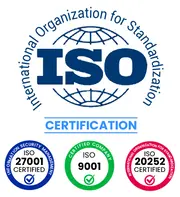Europe PV Inverter Market Share Analysis
The European photovoltaic (PV) inverter market has undergone notable transformations, reflecting the continent's commitment to clean energy and sustainability. PV inverters play a crucial role in converting the direct current (DC) generated by solar panels into usable alternating current (AC) for household and grid consumption. One of the key trends in the European PV inverter market is the growing emphasis on decentralized energy production. This shift towards smaller-scale, distributed solar installations is driven by a desire to reduce transmission losses, enhance grid resilience, and empower communities to actively participate in renewable energy generation.
Countries across Europe have implemented ambitious renewable energy targets, and solar power has emerged as a key player in meeting these goals. The decline in the cost of solar photovoltaic systems, combined with supportive government policies and financial incentives, has fueled a surge in residential and commercial solar installations. This trend is particularly pronounced in countries like Germany, Spain, and Italy, where prosumer initiatives encourage individuals and businesses to generate their own solar power and feed excess energy back into the grid.
In addition to decentralized installations, utility-scale solar projects have gained prominence in Europe. These large-scale developments contribute significantly to the region's solar capacity and are often accompanied by advanced PV inverter technologies to ensure efficient power conversion. Governments and the European Union have implemented frameworks to facilitate the integration of utility-scale solar projects into the energy mix, aligning with broader sustainability and carbon reduction objectives.
Energy storage solutions, coupled with PV inverters, have become integral to Europe's renewable energy landscape. As solar power generation is intermittent, effective energy storage helps smooth out fluctuations and ensures a reliable energy supply. Advancements in battery technology, coupled with favorable regulatory frameworks, have stimulated the growth of the energy storage market, creating synergies with PV inverters and reinforcing the reliability of solar energy systems.
Furthermore, digitalization and smart grid technologies are emerging trends in the European PV inverter market. Smart inverters equipped with advanced monitoring and control capabilities enable grid operators to manage and optimize the integration of solar power into existing electricity networks. This not only enhances grid stability but also facilitates the seamless integration of renewable energy sources. The deployment of smart meters and grid infrastructure upgrades further supports the transition to a more intelligent and responsive energy system.
European countries are also focusing on the environmental sustainability of solar technologies. Circular economy principles are being applied to the production and disposal of PV inverters, emphasizing the recycling and reuse of materials. This aligns with the European Green Deal and circular economy initiatives, ensuring that the growth of the PV inverter market is accompanied by responsible environmental practices.
Challenges persist in the European PV inverter market, including regulatory complexities, grid integration issues, and the need for standardization. Harmonizing grid codes and regulations across countries to accommodate diverse solar installations is an ongoing effort. Additionally, ensuring the cybersecurity of digitalized energy systems remains a priority to safeguard against potential threats.
The market trends in Europe's PV inverter sector underscore a strategic shift towards decentralized and sustainable energy production. The growth of residential and commercial solar installations, coupled with utility-scale projects and advancements in energy storage and smart grid technologies, reflects Europe's commitment to a greener energy future. As the market continues to evolve in response to policy developments and technological advancements, Europe remains at the forefront of the global transition towards cleaner and more resilient energy systems.











